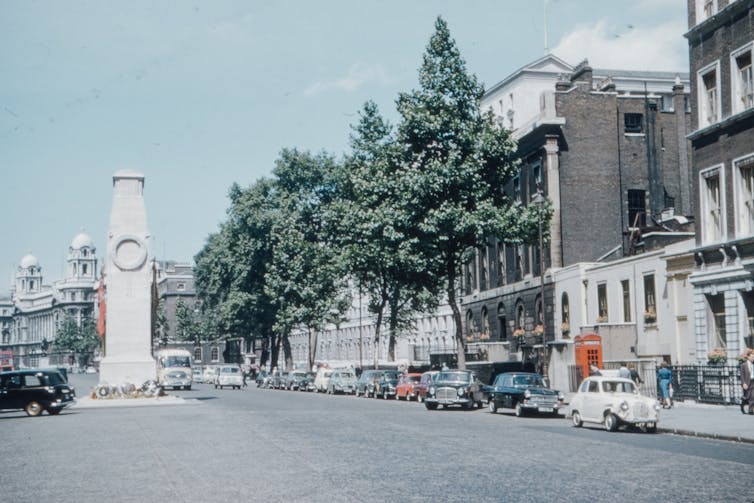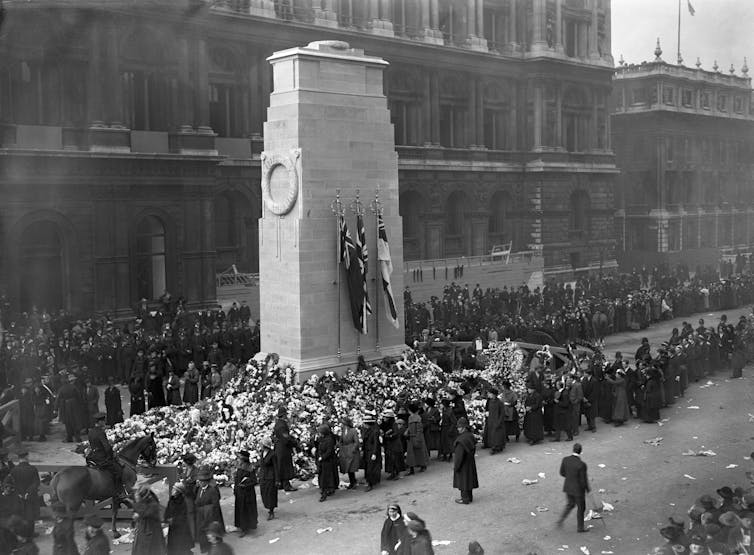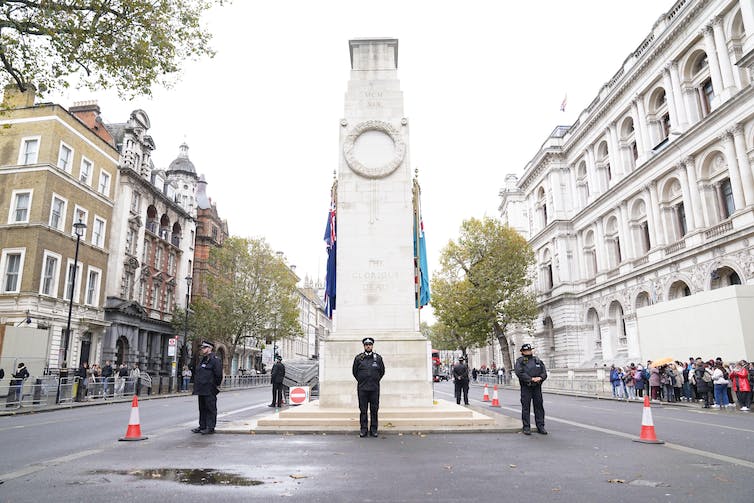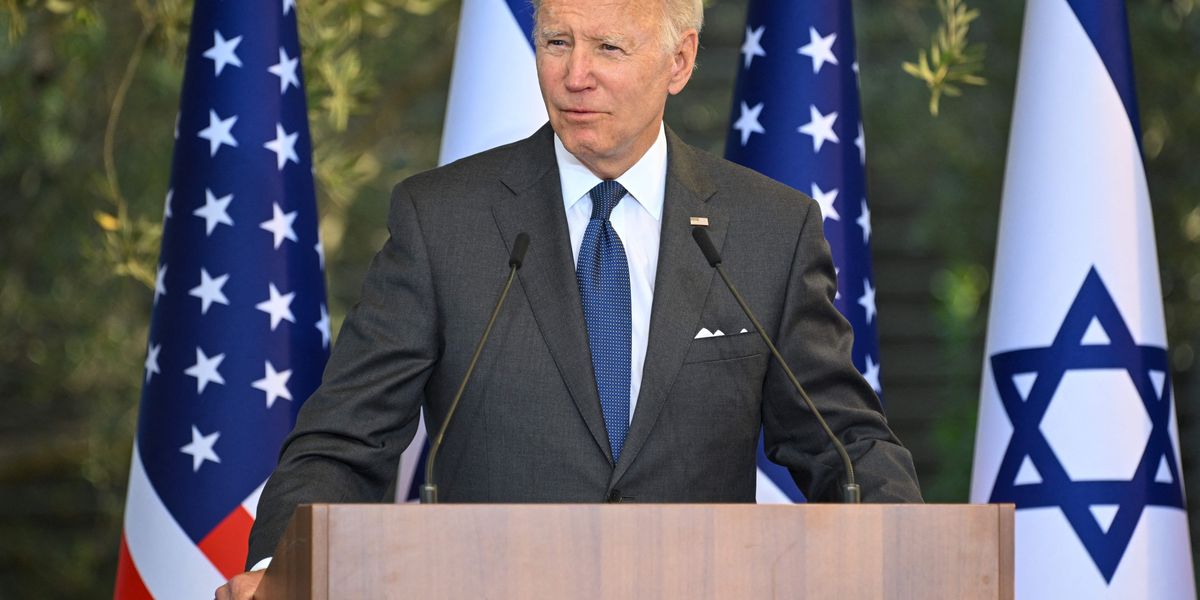The pro-Palestine protest planned to take place in London on Armistice Day has met with opposition from politicians and media pundits alike.
Organisers of the Armistice Day protest calling for a ceasefire in Gaza have said the march will not go near the Cenotaph on Whitehall. Opponents, meanwhile, have argued that it nonetheless poses a “threat” to the national war memorial.
The journalist Matt Ridley has said that “any protest which threatens the Cenotaph is a travesty”. Prime Minister Rishi Sunak has echoed this sentiment, saying:
There is a clear and present risk that the Cenotaph and other war memorials could be desecrated, something that would be an affront to the British public and the values we stand for.
The Cenotaph was first dedicated after the first world war and was later re-dedicated after the second world war. Each November, it is the focal point of official Armistice commemorations.
My research explores how war memorials in Britain and elsewhere are visible – and sometimes contested – sites of political and civic ritual. They are valued specifically because they usher sacred sentiment into public discourse. And as a result, they can on occasion find themselves at the centre of highly public disputes.
PA Images|Alamy
Sacred shrines of the secular age
For some, fears of memorial desecration have already been borne out. On November 6 2023, “Free Palestine” graffiti was daubed on the war memorial in Rochdale, Lancashire, and poppy wreaths damaged.
Similar fears have been voiced before. Back in 2016, the producers of the BBC’s Top Gear were criticised in the press when a video emerged of car stunts being filmed within sight of the Cenotaph. Former commander of British forces in Afghanistan Colonel Richard Kemp, reportedly characterised this as “a shocking desecration of one of our most sacred sites”
Such comments show the deep and sometimes complicated relationship the British public has with monuments and memorials commemorating 20th-century war. For many people, these are the sacred national shrines of an increasingly secular age.
Dedicated to the dead, they are solemn sites of remembrance re-sanctified in ceremony and ritual each November 11. Many have their origins in the 1920s.

Annie Spratt|Unsplash
Designed by Sir Edwin Lutyens, the Cenotaph was unveiled on November 11 1920 in a ceremony of national remembrance led by King George V. The word comes from the Greek kenotaphion, which means “empty tomb”. It is as such that Lutyens conceived of his paired down monument, a symbolic form deliberately chosen as non-denominational.
It was first built as a temporary structure of wood and plaster for the Victory Parade of July 1919. Around a million people made a pilgrimage to it in the week after the parade.
This outpouring of public grief was crucial to the establishment of a permanent Cenotaph, the following year, with the monument rebuilt in Portland stone. This fact is central to understanding the monument’s powerful place in modern British culture.
For many contemporaries, it was not simply an imposition from government but something which had been established as a result of collective and communal grief. In other words, it was the work of the people, not just of politicians.

PA Images|Alamy
Communal grief, albeit it on a smaller scale, was seen at many other locations across the country. In the towns and villages of Britain and its empire, local communities undertook the work of commemoration.
Historian Thomas Laqueur has suggested that these commemorative activities were part of the “democracy of death” because the war memorials of the 1920s carried the names of the “common soldier” – that is, ordinary people.
They were a feature of a new era of democratisation which saw new legislation introduced, including the Representation of the People Act (1918), which extended the right to vote specifically to women over the age of 30 who met a property qualification and to all men over the age of 21.
As such, these structures have come to play an important role in the civic life of many communities.
Any thing perceived as in some way encroaching upon them thus risks becoming seen as a “threat”. This might be an activity (car stunts) that causes noise and disturbance nearby. Or it might be an event (such as a protest) that has the potential to disrupt a time-honoured ritual.
The route of the planned pro-Palestine march will not take protestors anywhere near the Cenotaph. And yet, despite the Western Front Association, which organises Armistice Day commemorations, saying the march should be allowed to go ahead, it clearly remains an emotive issue for many.
This public sentiment is precisely why politicians invoke the Cenotaph – those wishing to stoke divisions know it will be a successful gambit. Ultimately, the ongoing debate over the protest shows that even the nation’s war memorials can become drawn into the increasingly fractious politics of post-Brexit Britain.




